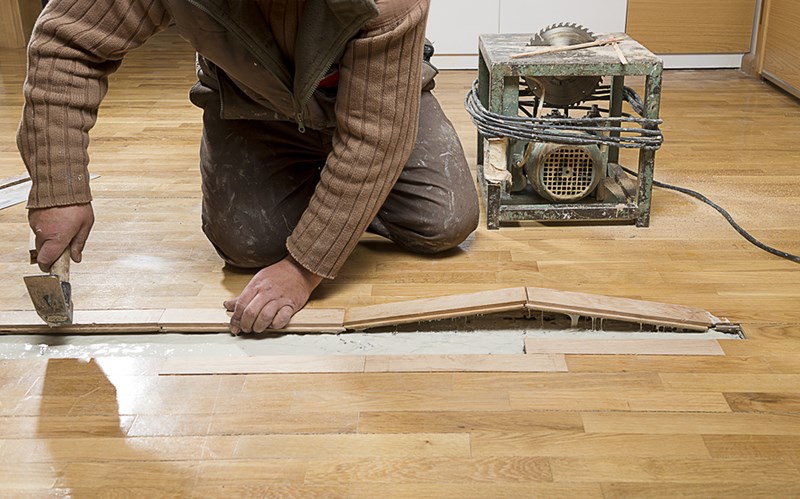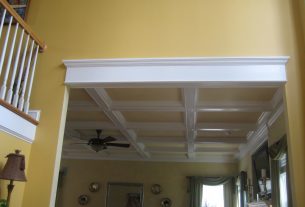Wooden floors are timeless, adding warmth and sophistication to any home. However, when faced with a flooding situation, these elegant surfaces can quickly turn into a homeowner’s nightmare. In this blog, we will explore a step-by-step guide on what to do when your wooden floors have been flooded, helping you salvage and restore their natural beauty.
Act Quickly and Prioritize Safety
The first and foremost step when your wooden floors have been flooded is to act swiftly. Ensure everyone’s safety by turning off electricity to the affected area. Standing water poses electrical hazards, and it’s crucial to prioritize safety before assessing the damage to your wooden floors.
Remove Excess Water Immediately
Time is of the essence when dealing with water-damaged wooden floors. Use towels, mops, or a wet-dry vacuum to remove as much standing water as possible. The longer water sits on the wooden surface, the higher the risk of irreversible damage such as warping and mold growth. Work systematically and be thorough in your efforts to extract water from the affected areas.
Identify the Source of the Water
Understanding the source of the water is essential in determining the appropriate course of action. Whether it’s a burst pipe, a leaking roof, or a natural disaster, identifying and addressing the root cause will prevent further damage and help in the restoration process. If the water damage is due to a plumbing issue, it’s advisable to fix the problem before proceeding with the restoration of the wooden floors.
Assess the Damage to the Wooden Floors
Once you have removed excess water, carefully assess the extent of the damage to your wooden floors. Look for signs of warping, cupping, or buckling. Water can also cause discoloration and promote mold growth. Take note of these issues as they will guide your decisions on whether the floor can be salvaged or if replacement is necessary.
Drying the Wooden Floors
Thoroughly drying the wooden floors is crucial in preventing further damage and mold growth. Use fans, dehumidifiers, and open windows to promote air circulation and accelerate the drying process. Consider renting industrial-grade drying equipment for larger areas or if the water damage is extensive. It’s essential to continue this drying process until the wood is completely dry.
Apply Anti-Mold Treatment
Mold can be a significant concern after water damage. Once the wooden floors are thoroughly dry, apply an anti-mold treatment to prevent mold spores from taking hold. This step is particularly important in humid climates or if the water damage has occurred over an extended period. Choose a product specifically designed for wood surfaces and follow the manufacturer’s instructions carefully.
Sand and Refinish Damaged Areas
If the wooden floors have sustained visible damage, such as stains or discoloration, consider sanding and refinishing the affected areas. This process involves removing the damaged finish, sanding the wood, and applying a new finish. Keep in mind that this may not be suitable for all types of wooden floors, so it’s advisable to consult with a professional or follow the manufacturer’s recommendations.
Consult with Flooring Professionals
For extensive water damage or if you are unsure about the appropriate steps to take, it’s advisable to consult with flooring professionals. Experienced professionals can assess the damage, provide guidance on the best course of action, and execute restoration procedures effectively. They may also be able to salvage more of your wooden floors than you initially thought possible.
Prevent Future Water Damage
After dealing with the immediate aftermath of a flood, it’s crucial to take preventive measures to avoid future water damage to your wooden floors. Consider installing water sensors near vulnerable areas, maintaining your home’s plumbing regularly, and addressing leaks promptly. Additionally, using area rugs and mats in high-risk areas can provide an extra layer of protection against potential water damage.
Experiencing a flood in your home can be a stressful and challenging situation, especially when it comes to preserving the beauty of your wooden floors. By acting quickly, prioritizing safety, and following these comprehensive steps, you can increase the chances of salvaging your wooden floors and restoring them to their former elegance. Whether you decide to tackle the restoration process yourself or seek professional assistance, the key is to address water damage promptly and methodically to minimize long-term effects on your cherished wooden floors.



